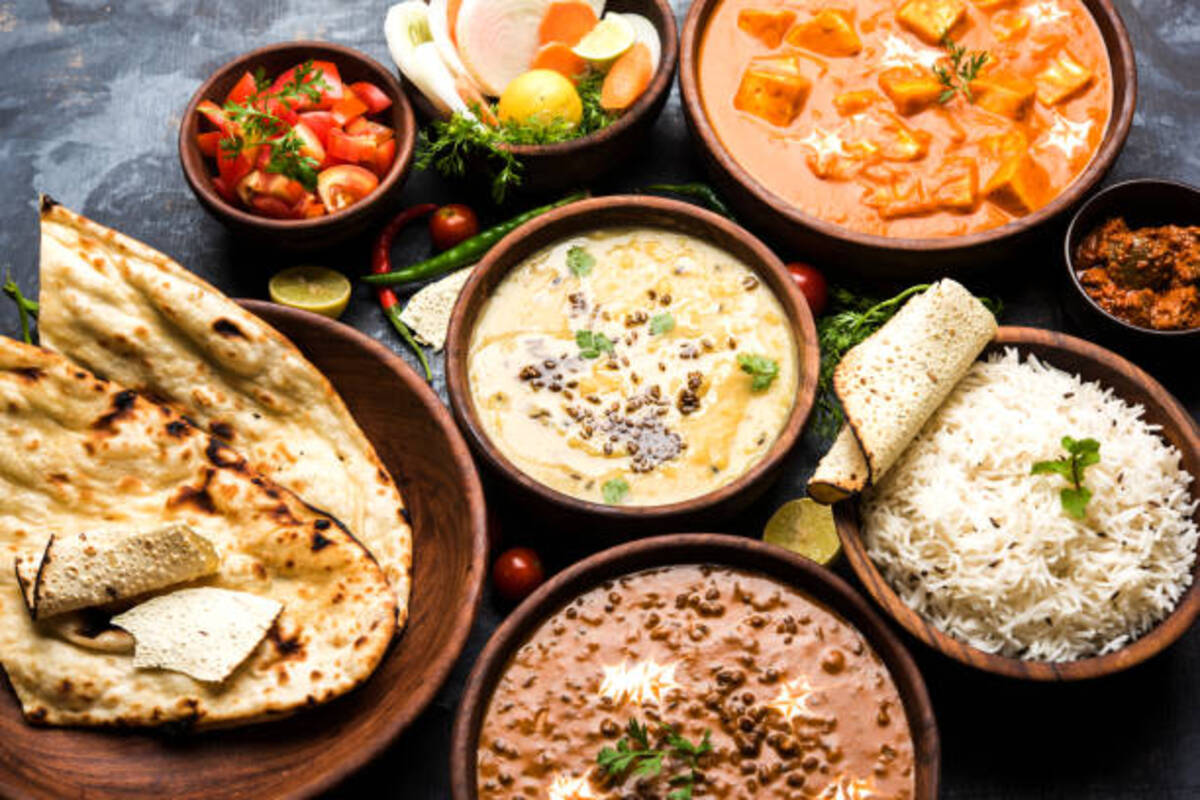Punjab is the land of rivers, vast agricultural lands, larger-than-life people, and most interestingly—scrumptious food. Dishes like Sarson Da Saag, Tandoori Chicken, Shami Kebab, Makki di Roti, etc. are some Punjabi dishes that rule over the hearts of all food lovers. The culinary practices of the state are simple, rustic, yet exotic in their own way.
Punjabi cuisine is known for its rich, buttery flavors along with the extensive vegetarian and meat dishes. One of its main features is its diverse range of dishes. Restaurant-style dishes use large amounts of ghee and butter. Some food items are eaten daily while some delicacies are cooked only on special occasions. If your mouth has started to water, here are 8 dishes you can’t miss in Punjab.
Advertisement
1. Butter Chicken – The King of all Punjabi dishes!
While chicken may very well be called the national bird of Punjab, butter chicken is the crowning jewel of the food of Punjab. While it may not have originated in Punjab, it was invented by a Punjabi family so that counts, right? No celebration can be complete without this delicacy. This creamy, gravy dish is lightly spiced and paired up with either naan or rumaali roti.
2. Dal Makhani
If one dal had to rule them all, it would definitely be the dal makhani. This delectable buttery Punjabi dish of lentils is a rich concoction of black lentils and red kidney beans made in a thick gravy made even richer with dollops of cream. It’s a dish worth serving in a royal court.
Traditionally, it simmers for 2-3 hours over a low flame to get it to thicken as the flavors keep becoming deeper.
3. Paneer Tikka
Also called ‘chicken of the vegetarians’, the paneer tikka has a special place in the food of Punjab. Chargrilled and spiced, this soft cottage cheese delicacy is the first to come to mind when one thinks of vegetarian appetizers. And frankly, any menu would be incomplete without it!
4. Punjabi Pakoda Kadhi – Food of Punjab, light and flavorful!
The Punjabi kadhi attests to the awesomeness of the day-to-day food of Punjab and its people. The Punjabi kadhi is different from its Gujarati friend in a number of ways. It’s spicy and tangy along with having besan pakoras while the Gujarati variant is sweeter and of a lighter consistency and white in color.
The pakoras that are put are generally made of besan and onions. An alternative to them is also by putting in some peas and sliced onion to give a different flavor.
5. Rajma Chawal – Staple Punjabi Food on tables across India!
It’s a staple in every household in north India while also having a nostalgic connotation for most. Having rajma or chawal with anything apart from each other feels wrong, like breaking up your favorite couple.
Even though it comes from Kashmir indigenously, it’s a favorite among all Punjabis and their grandmothers. This Punjabi dish is also generally served with a side of pickled onions, to enhance the taste. To give it a slight twist, some people also add a little bit of crushed papad to their rajma chawal to give it a nice crunch.
6. Sarson ka Saag – The most stereotyped dish of Punjab!
‘Sarson ka khet’ is synonymous with Dilwale Dulhaniya Le Jayenge, given that food and Bollywood are two, true Indian passions. Every north Indian foodie worth their salt (and spices) would associate this dish with Punjabi cuisine.
Being a winter favorite, it can be found in all restaurants as a specialty. Given the slightly bitter taste of the mustard leaves, spinach can also be added to make it healthier, tastier and with a dollop of the famous dest-ghee for good measure and as a wintery guilty pleasure!
7. Makke ki Roti ‘ The saag’s favorite companion!
Makki ki roti and Sarson ka Saag are the desi equivalent of mac and cheese? they just go together. With the cornflour being crumbled in nature, the pros know how to make it best. But if you attempt to make it at home, add a little bit of regular flour or grated radish as a binding agent. Served with jaggery as an accompaniment, this is truly a match made in a Punjabi-pind!
8. Karma Prashad
If there’s anything else a gurudwara is famous for apart from tranquillity, kindness, and their open kitchens, it is the karma Prashad. This dish of the food of Punjab is one of the best things which you’ve ever tasted, especially on a cold morning in a Gurudwara.
Made with equal portions of sooji or semolina, butter, and sugar, it is a dish that screams love and affection, much like your mother does. The Golden Temple is the most famous for this, it is served up in all other gurdwaras as well as made in Punjabi households on special occasions.
If you want to show someone you love them, make them a smattering of this indulgent halwa, a true labor of love!
9. Chole-Bhature – Punjabi Food Fiesta!
It’s a standard Punjabi dish in most fast-food restaurants now. And these two accompany each other like a dream when you feel like indulging a little.
Made with flour and milk rather than wheat flour, it’s different from a poori. And although it’s much larger than a poori, you can’t just eat one because it’s that tasty! The soft, slightly fermented bhatura should be your go-to when you are craving some hardcore, spicy food from Punjab.
10. Parantha – The Staple Food of Punjab
No matter who you are, chances are that you’ve had a parantha at least once in your life. This delectable offering has come to India through the annals of Punjabi cuisine, and what a discovery that was! Be it plain or stuffed, this bread is a staple of most Punjabi households.
Even while traveling, the most preferred item to eat at a Dhaba is mostly always a paratha. Fried in desi ghee is the way most people in Punjab like it. Have with some cold curd and pickle, it is quite a humble match made in gastronomic heaven.
The possibilities of the stuffings are endless. Be it potatoes, onions, cottage cheese, keema to newer variants like bottle gourd, mangoes, and almost anything you could imagine!
The popularity is a testament is a fact that the national capital also has an area ‘paranthawali Gali’ dedicated to serving up all possible varieties of it. Plus, like a roti, it doesn’t even have to be round so you can definitely make it at home without being taunted about making a ‘world map’ in the name of food!
















